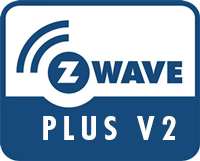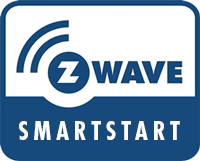What is Z-Wave?
The Z-Wave protocol was developed by Zensys, a Danish company based in Copenhagen, in 1999 primarily for residential and commercial building automation. It is a mesh network using low-energy radio waves to communicate from device to device, allowing for wireless control of smart home devices, such as smart lights, security systems, thermostats, sensors, smart door locks, and garage door openers. Since 2018 the Z-Wave brand and technology are owned by Silicon Labs.
Its 100 series chip set was released in 2003, and its 200 series was released in May 2005, with the ZW0201 chip offering high performance at a low cost. Its 500 series chip, also known as Z-Wave Plus, was released in March 2013, with four times the memory, improved wireless range, improved battery life, an enhanced S2 security framework, and the SmartStart setup feature. Its 700 series chip was released in 2019, with the ability to communicate up to 100 meters directly from point-to-point, or 800 meters across an entire Z-Wave network, an extended battery life of up to 10 years, and comes with S2 and SmartStart technology.
What is Z-Wave Plus V2?

Z-Wave Plus V2, also known as 700 Series or Gen7, builds on the work that began with Z-Wave Plus and the incremental improvements of S2 and SmartStart. From the firmware to the chips themselves, Gen7 brings massive increases in wireless range, vastly superior security, faster operation and all while decreasing power consumption yet again.
The 700 series edition of Z-Wave Plus chips and modules offer major advantages over older versions of Z-Wave in a lot of different categories. End users will notice them the most in wireless speed and improved battery life. Developers will notice them the most in the improved wireless range and the improved memory.
What is Z-Wave SmartStart?

SmartStart aims to simplify the process of Including Z-Wave devices and builds upon the functionality that was introduced by S2.
What is Z-Wave S2?


S2 is an extension to the security framework of Z-Wave Plus devices. It enables manufacturers to offer advance security without any compromises in terms of power consumption or latency.
